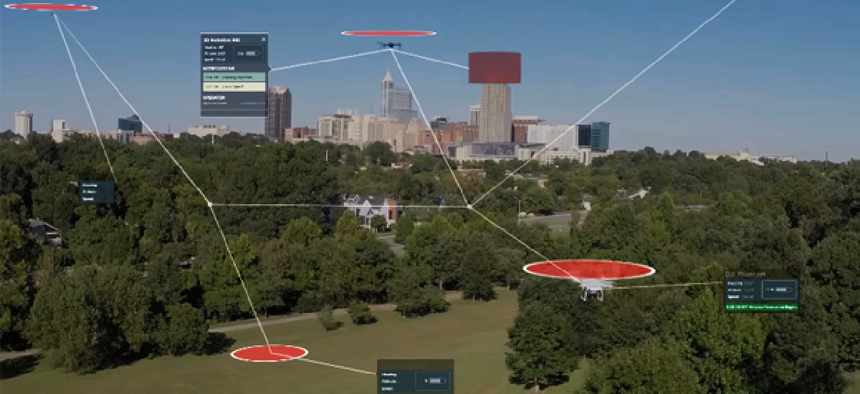How to do air traffic control for drones


Connecting state and local government leaders
PrecisionHawk’s LATAS platform combines radar, satellites and cell networks, offering a consolidated interface for tracking and monitoring drone activity within the national airspace.
Despite the lack of a framework to integrate drones into the national airspace, the Federal Aviation Administration and private companies are continuing efforts to clear the technical barriers to widespread use of unmanned aerial systems.
Recent tests of a new platform may offer a solution. PrecisionHawk, a terrestrial data acquisition and analysis company, announced the successful tests of its Low Altitude Traffic and Airspace Safety platform. Using both LTE and satellites, LATAS connects airspace safety technologies such as detect and avoid, dynamic geofencing and aircraft tracking “to provide ‘safety as a service’ for the rapidly growing drone market,” the company said.
“The best part about LATAS is it can be deployed in so many different ways,” Tyler Collins, director of business development and the LATAS Project at PrecisionHawk, told GCN. These include cell phone networks, satellite or ground control stations, among others.
Because the FAA cannot create an entirely new air traffic system for drones, Collins said, LATAS must be able to interface with current control systems, and provide a flexible and open framework into which others can integrate their own data.
A partnership with Harris gives PrecisionHawk tracking and monitoring services through its nationwide Automatic Dependent Surveillance-Broadcast (ADS-B) ground station. A drone sends its location to LATAS, which interfaces with current air traffic control systems and then feeds the drone information about what is in the airspace around it. “If I already know where all of the manned aircraft are, whether it’s from ADS-B or radar, then I can see that back through the LATAS system.… Not only is the UAV telling everybody else where he’s at, but I can tell that UAV what’s around him,” Collins said.
LATAS is also capable of tracking drones via the LTE networks associated with cell towers. “LTE networks have the potential to allow drones to deliver sensor data for processing, analysis and decision-making mid-flight and to receive command-and-control inputs in real time, resulting in a safer, more reliable shared airspace,” said David Famolari, director of Verizon Ventures.
Smaller drones do not file flight plans and are difficult to track on radar, making the ability to monitor them through other means an attractive option. While most of PrecisionHawk’s customers are Fortune 500 companies in the energy and agriculture industries, LATAS is geared toward both the commercial and consumer sphere. “At the end of the day, we have to create a safe airspace for everybody,” Collins said.




